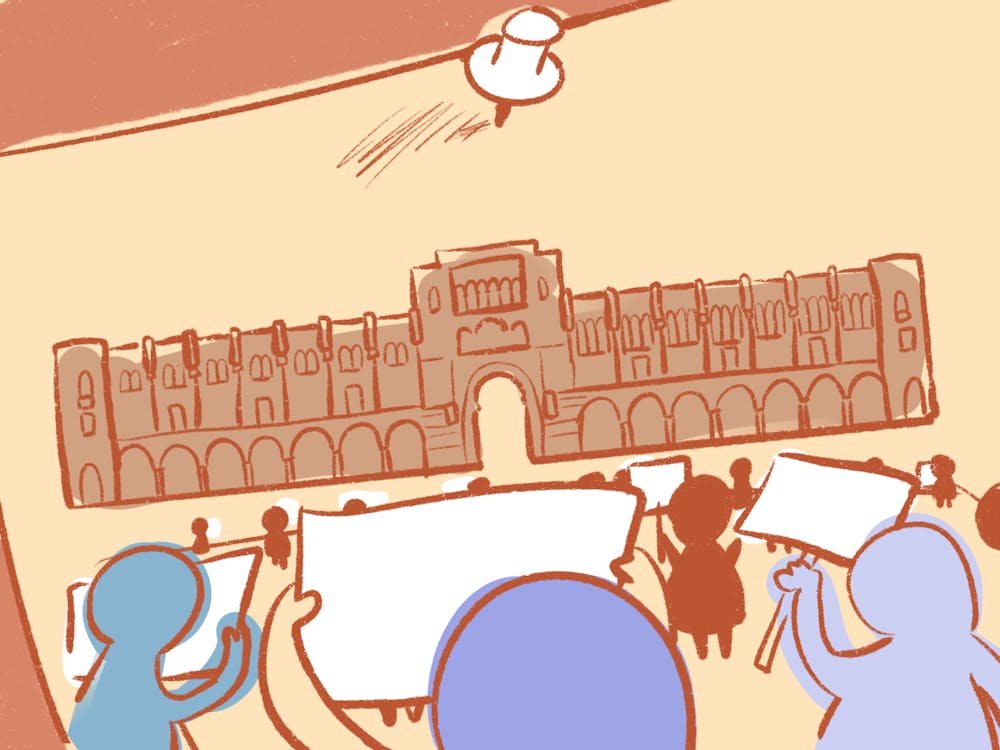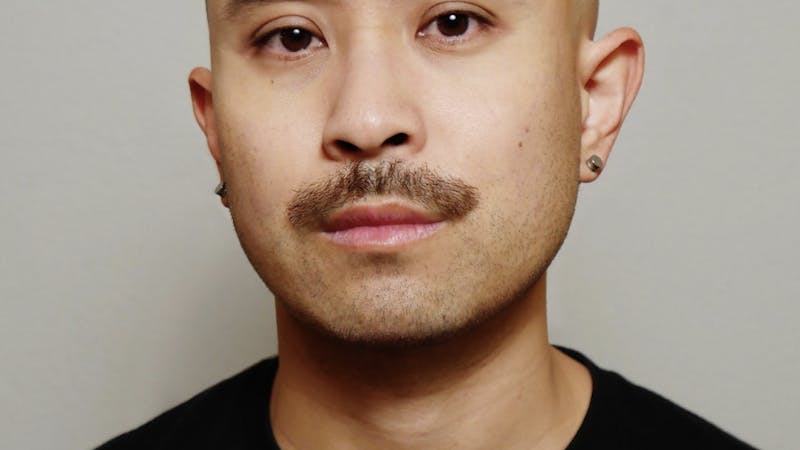Shifting the status quo: Campus activism, protests change over time

Last week, the academic quad reopened after nearly a year of reconstruction, kickstarted by the decision to relocate the Founder’s Memorial statue. Protests for the statue’s removal began Aug. 31, 2020, and continued for a year and a half before the Board of Trustees announced their decision to remove the statue on Jan. 25, 2022.
The success of the Rice student movement for Willy’s removal is evidence that Rice students have power to influence administrative decisions, according to Ben Mayberry ’73. Mayberry was a student at Rice during protests against the Vietnam War.
“The protests about Willy’s statue, they were very responsive to that,” Mayberry said. “They listened to what people had to say. I don’t know how the administration would have responded 50 years ago, but it was a very different time for sure.”
On the other hand, Daniel Koh ’20 said that he believes the revival of the Black Lives Matter movement after George Floyd’s murder, rather than student organizing on campus, pushed the Rice administration to remove Willy’s statue.
“Once it becomes politically inexpedient to continue with the status quo, then the administration will change tactics and kind of go forward,” Koh said. “Either the mass movement beyond Rice is too strong to ignore so that Rice would look bad in maintaining the status quo, or a peer institution institutes a similar change and Rice changes their tactics.
“When I was trying to get the SAT/ACT requirement removed,” Koh continued, “I got the exact same thing, and then the day after Harvard [University] announced that they would take away the requirement, Rice changed their mind and said that, ‘Ooh, we’re doing the same thing.’ So, those are the only times where the administration kind of responds favorably. It’s not because of the students, it’s because of external factors that affect their bottom line.”
Nick Cooper ‘91 said he felt the statue’s removal was more to preserve the university’s reputation than genuine care.
“The fundamental issue is that they’re going to pretend that they care about tarnishing their reputation by having a statue of William Marsh Rice,” Cooper said. “Meanwhile, they’re going to invite Kissinger and Hillary Clinton to come and speak [at the Baker Institute’s 2023 gala]
‘They just waited for them to leave’
In the spring of 1970, the Student Association Senate notified the Dean of Students that they intended to sponsor the appearance of Abbie Hoffman. Hoffman was an American political and social activist who co-founded the Youth International Party, was particularly outspoken against the Vietnam War, and was described as a radical speaker in the April 9, 1970 issue of the Thresher. The acting Rice president at the time, Frank Vandiver, denied the Senate’s invitation to Hoffman, citing recent events on campus and phoned threats of violence.
In protest, a group of Rice students occupied the Allen Center business building. Their occupation was initially peaceful; according to the April 16, 1970 issue of the Thresher, they entered the building at 2 p.m. Saturday, April 11. They were ordered to leave at 11 p.m. on Sunday, but refused. Dean of Students Frederick Wierum stated that “anyone still in the building at 11:30 p.m. would face disciplinary probation ‘or worse.’”
Mayberry, who was not part of the protest but was outside of the building, said that the situation escalated considerably when a group of non-students and students from Texas Southern University and the University of Houston stormed the building soon after Wierum’s ultimatum.
“The Rice students felt like they’d been intellectually snubbed by the administration,” Mayberry said. “Their freedom of speech had been violated. But at the same time, Rice students weren’t prone to violent protests, so they were just doing a sit-in in the building. The students from off-campus were much more radical, and they were looking for any kind of confrontation they could find with authority.”
Eventually, students left the building peacefully. Mayberry said that he did not believe that, at least prior to the situation, that the Rice administration had planned to force the students out.
“The administration wasn’t happy that the building was occupied, but they weren’t preparing to storm the building and remove the students or anything like that,” Mayberry said. “I wouldn’t be surprised if they were just waiting for them to leave … I’m sure the students had demands, and the administration negotiated with them to leave, but they weren’t going to remove them forcibly.”
Protests against speech
In fall of 1985, Jana Sanchez ’86 and a few other students at Rice formed the Central American Peace Forum. According to the Nov. 8, 1985 issue of the Thresher, the Student Association Senate distributed $300 of leftover funds from a defunct student organization to CAPF, so they could sponsor films and lectures on politics in Latin America.
The club planned their first meeting for Nov. 12, 1985.
However, things went awry. According to the Nov. 15, 1985 issue of the Thresher, “22 students opposed to giving Blanket Tax funds to the Peace Forum entered the room and attempted to take control of the organization, passing a new constitution written by themselves, electing new officers, and adjourning the Peace Forum’s meeting.”
In the same issue, two ringleaders of the opposing group stated that they’d been concerned over using Blanket Tax funds for political groups and decided to protest the issue in a peaceful, democratic way. Blanket Tax funds come from a charge on each student’s tuition at the beginning of the academic year. The opposing group leaders disagreed with using Blanket Tax funds for organizations that not all students agree with, and questioned why the Student Association should spend tuition money on things that they did not believe benefitted them.
On the other side of things, Jane Mitchell ‘86 stated in the Nov. 15 issue that the opposing group had been extremely disruptive, refusing to acknowledge anything she said by shouting over her.
“It was very intimidating, actually, like a big group of them came in,” Sanchez said. “And we were just like, probably we were like six or seven people, we weren’t huge, and we were, I think, all girls as well.”
According to the Nov. 22, 1985 issue of the Thresher, the University Court stated that they would try Grady Gibbs ’88, the leader of the opposing group, by the end of the fall semester and “that no other members in Gibbs’ group will face charges.” It is unclear what charges Gibbs faced, but his op-eds were published in issues of the Thresher during the spring 1986 semester, and he later obtained a leadership position as the Lovett Election Chairman.
According to the Dec. 6, 1985 issue of the Thresher, the Senate additionally voted on whether or not to take away the CAPF’s funds. The vote was tied, and the motion ultimately failed.
Swept under the rug
As a student, Koh became involved with and organized a variety of student movements. In particular, he worked with the Houston Coalition for Equitable Development without Displacement to advocate against the Ion project Rice was building in the Third Ward. As the Jones College new student representative and senator, he also advocated for change in the financial aid system for international students and for removal of the SAT/ACT requirement during the COVID-19 pandemic.
“Each one of those three instances where I tried to initiate conversation with administration, it took several weeks to get a response at first,” Koh said. “Then, either I got a response through email and that was intended to be the end of the conversation, or if I kept pushing, then I got a single meeting with a single administrator and that single meeting was intended to be the end of the discussion period.”
Throughout his advocacy efforts, Koh said that he noticed a pattern in how the administration responded. According to Koh, Rice administration attempted to contain movements by directing any conversation on new issues to the Student Association, where bureaucracy would delay productive change, and by refusing requests for town halls.
“[Senate resolutions were] a big slowdown because it would take at least a week to draft, at least a week to propose, and then another week to go. It was intended as a delaying tactic there, and then also because engagement in Student Association has historically been low,” Koh said. “All of that precluded the participation of students who maybe are interested in the issue, but not necessarily interested in the bureaucracy.”
Even after the Student Association passed a resolution in support of HCEDD’s request for a community benefits agreement with Rice, Koh said the administration continued refusing to budge.
“Rice’s response was basically like, ‘We’re under no obligation to follow up on any Student Association resolution,’” Koh said. “Which is true, ultimately the Student Association is an expression of student majority opinion, but the administration has no vested responsibility to act on that in any way.”
According to Koh, the administration would also attempt to contain movements by framing op-eds published in the Thresher as attacks on administration members. However, he noted that the containment of student movements at Rice was not only the fault of university administration.
“It’s also tough because Rice is a campus where students are busy,” Koh said. “Rice is a campus where students are historically kind of disengaged from politics. They’re shielded by privilege. I noticed this strongly with Ion. HCEDD had so much action and support from U of H, because U of H has locations in Midtown where ION was being built, but they also have a much stronger history of student organizing. The baseline level of student engagement is higher.”
To change this trend, Koh said it is important for students to become involved in more unconventional ways.
“One thing that I wish that I would see students do more is act outside of usual channels,” Koh said. “We’ve seen historically that the channels provided for us are intended to be insufficient to create change. So, students need to do stuff that is outside...I think that historically we haven’t had enough of that. I think it shows in kind of the reputation and the lack of progress we’ve made as an institution. If there was one thing that I wish for future generations of students, it would be that.”
More from The Rice Thresher

Andrew Thomas Huang puts visuals and identity to song
Houston is welcoming the Grammy-nominated figure behind the music videos of Björk and FKA twigs on June 27.

Live it up this summer with these Houston shows
Staying in Houston this summer and wondering how to make the most of your time? Fortunately, you're in luck, there's no shortage of amazing shows and performances happening around the city. From live music to ballet and everything in between, here are some events coming up this month and next!

Rice to support Harvard in lawsuit against research funding freeze
Rice, alongside 17 other research universities, filed an amicus curiae brief in support of Harvard University’s lawsuit against the Trump administration over more than $2 billion in frozen research grants.

Please note All comments are eligible for publication by The Rice Thresher.